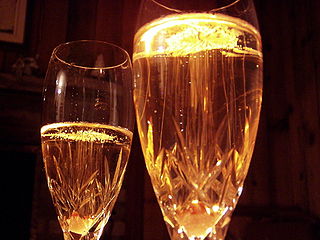 W
WAutolysis in winemaking relates to the complex chemical reactions that take place when a wine spends time in contact with the lees, or dead yeast cells, after fermentation. While for some wines - and all beers - autolysis is undesirable, it is a vital component in shaping the flavors and mouth feel associated with premium Champagne production. The practice of leaving a wine to age on its lees has a long history in winemaking dating back to Roman winemaking. The chemical process and details of autolysis were not originally understood scientifically, but the positive effects such as a creamy mouthfeel, breadlike and floral aromas, and reduced astringency were noticed early in the history of wine.
 W
WBottle variation is the degree to which different bottles, nominally of the same product, can have different taste, smell, etc.
 W
WBoxed wine is wine packaged in a bag-in-box. Wine is contained in a plastic bladder typically with an air-tight valve emerging from a protective corrugated fiberboard box. It serves as an alternative to traditional wine bottling in glass with a cork or synthetic seal.
 W
WIn viticulture, the canopy of a grapevine includes the parts of the vine visible aboveground - the trunk, cordon, stems, leaves, flowers, and fruit. The canopy plays a key role in light energy capture via photosynthesis, water use as regulated by transpiration, and microclimate of ripening grapes. Canopy management is an important aspect of viticulture due to its effect on grape yields, quality, vigor, and the prevention of grape diseases. Various viticulture problems, such as uneven grape ripening, sunburn, and frost damage, can be addressed by skillful canopy management. In addition to pruning and leaf trim, the canopy is often trained on trellis systems to guide its growth and assist in access for ongoing management and harvest.
 W
WA cantina is a type of bar common in Latin America and Spain. The word is similar in etymology to "canteen", and is derived from the Italian word for a cellar, winery, or vault. In Italy, the word cantina refers to a room below the ground level where wine and other products such as salami are stored.
 W
WDepending on the province in which it is produced, Cellared in Canada is a category of Canadian wine that is produced with varying quantities of foreign bulk wine and Canadian wine. These wines are often sold in government-run liquor stores in sections designated as "Canadian wine". In British Columbia, Cellared in Canada wine may be produced from 100 percent foreign content with grapes grown from Washington State, California, South Africa, Argentina, Chile. and possibly even China. In Ontario, Cellared in Canada wine is allowed to be produced from a blend of no more than 60 percent foreign-sourced content. Within the 40 percent Ontario content, dilution with water is not allowed. The only indication of origin is found on the back of the bottle, with a term such as "Cellared in Canada from international and domestic wines". Other permitted terms are "Product of Canada" and "Vinted in Canada".
 W
WIn viticulture, the climates of wine regions are categorised based on the overall characteristics of the area's climate during the growing season. While variations in macroclimate are acknowledged, the climates of most wine regions are categorised as being part of a Mediterranean, maritime or continental climate. The majority of the world's premium wine production takes place in one of these three climate categories in locations between the 30th parallel and 50th parallel in both the northern and southern hemisphere. While viticulture does exist in some tropical climates, most notably Brazil, the amount of quality wine production in those areas is so small that the climate effect has not been as extensively studied as other categories.
 W
WA clos is a walled vineyard. Walled vineyards protected the grapes from theft and may improve the mesoclimate. They were often the vineyards of Cistercian monasteries. The word is often used in the name of famous wines even when the wall no longer exists.
 W
WComet vintages are years during which an astronomical event, involving generally a "Great Comet", occurs prior to harvest. Throughout the history of wine, winemakers have attributed successful vintages and ideal weather conditions to the unexplained effects caused by the comets. Some of the most heralded vintages in the last couple of centuries—such as the 1811, 1826, 1839, 1845, 1852, 1858, 1861, 1985, and 1989 vintages—have coincided with a notable appearance of a comet. There is no scientific basis for any effect of comets on viticulture, but the term nevertheless remains in use.
 W
WCork taint is a broad term referring to a wine fault characterized by a set of undesirable smells or tastes found in a bottle of wine, especially spoilage that can only be detected after bottling, aging and opening. Though modern studies have shown that other factors can also be responsible for taint – including wooden barrels, storage conditions and the transport of corks and wine – the cork stopper is normally considered to be responsible, and a wine found to be tainted on opening is said to be corked or "corky". Cork taint can affect wines irrespective of price and quality level.
 W
WCoulure is a viticultural hazard that is the result of metabolic reactions to weather conditions that causes a failure of grapes to develop after flowering. In English the word shatter is sometimes used. Coulure is triggered by periods of cold, cloudy, rainy weather or very high out-of-season temperatures. The condition is most often manifested in the spring. It also occurs in vines that have little sugar content in their tissue. Flowers stay closed and are not fertilized. Thus the vines are not pollinated as the grape fails to develop and falls off. Coulure can also cause irregular bunches of grapes which are less compact than normal. These bunches are more sensitive to developing various grape diseases. The yield of a vine with coulure will decrease substantially. Grape varieties with high proclivity to coulure are Grenache, Malbec, Merlot, and Muscat Ottonel. Other causes of coulure may be vineyard conditions and practices, pruning too early or too severely, excessively fertile soils or overuse of fertilizers, and improper selection of rootstocks or clones.
 W
WCru is a wine term used to indicate a high-quality vineyard or group of vineyards. It is a French word which is traditionally translated as "growth", as it was originally the past participle of the verb "croître". The term is often used within classifications of French wine. By implication, a wine that displays the name of its cru on its wine label is supposed to exhibit the typical characteristics of this cru. The terms Premier Cru and Grand Cru designate levels of presumed quality that are variously defined in different wine regions.
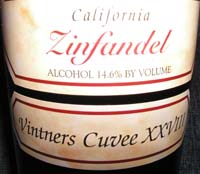 W
WCuvée is a French wine term that derives from cuve, meaning vat or tank. Wine makers use the term cuvée with several different meanings, more or less based on the concept of a tank of wine put to some purpose.
 W
WDessert wines, sometimes called pudding wines in the United Kingdom, are sweet wines typically served with dessert.
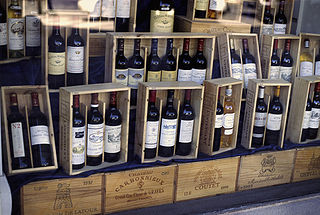 W
WEn primeur or "wine futures", is a method of purchasing wines early while the wine is still in the barrel. This offers the customer the opportunity to invest before the wine is bottled. Payment is made at an early stage, a year or 18 months prior to the official release of a vintage. A possible advantage of buying wines en primeur is that the wines may be considerably cheaper during the en primeur period than they will be once bottled and released to the market. However, that is not guaranteed and some wines may lose value over time. Wine experts, like Tom Stevenson, recommend buying en primeur for wines with very limited quantities and will most likely not be available when they are released. The wines most commonly offered en primeur are from Bordeaux, Burgundy, the Rhône Valley and Port, although other regions are adopting the practice.
 W
WEnotourism, oenotourism, wine tourism, or vinitourism refers to tourism whose purpose is or includes the tasting, consumption or purchase of wine, often at or near the source. Where other types of tourism are often passive in nature, enotourism can consist of visits to wineries, tasting wines, vineyard walks, or even taking an active part in the harvest.
 W
WFlavored fortified wines are inexpensive fortified wines that typically have an alcohol content between 13% and 20% alcohol by volume (ABV). They are usually made of grape, fruit, and citrus, with added sugar, artificial flavor and artificial color.
 W
WA division of grape varieties into Frankish and Hunnic grape varieties was practiced in German-speaking countries in the Middle Ages and separated varieties considered to be better from those considered to be lesser. Frankish (fränkisch) grapes were considered noble grapes, and the designation derived from the Franks, as popular belief held that those were grapes introduced by Charlemagne or at least through his edicts. Hunnic grapes, on the other hand, were the simpler varieties.
 W
WGrower Champagnes are Champagnes produced by the estate that owns the vineyards where the grapes are grown. Récoltant-Manipulant is the term in French, and Grower Champagnes can be identified by "RM" on the wine label. While large Champagne houses such as Mumm, Moët et Chandon and Veuve Clicquot may use grapes from as many as 80 different vineyards in the Champagne region to create a consistent house style, Grower Champagnes tend to be more terroir-focused, sourced from a single vineyard or closely located vineyards around a village, and made with grapes which vary with each vintage. Today there are over 19,000 independent growers in the Champagne region, accounting for nearly 88% of vineyard land in the region; around 5,000 of these growers produce wine from their own grapes. Of the Champagne imported into the US in 2014, only 5% was Grower Champagne.
 W
WIn eastern Austria, a Heuriger is a tavern where local winemakers serve their new wine under a special licence in alternate months during the growing season. The Heurige are renowned for their atmosphere of Gemütlichkeit shared among a throng enjoying young wine, simple food, and - in some places - Schrammelmusik. They correspond to the Straußwirtschaften in the German Rheinland, the Frasche in Friuli-Venezia Giulia, and Osmiza in Slovenia.
 W
WAn international variety is a grape variety that is widely planted in most of the major wine producing regions and has widespread appeal and consumer recognition. These are grapes that are highly likely to appear on wine labels as varietal wines and are often considered benchmarks for emerging wine industries. There is some criticism that the popularity of so-called international varieties comes at the price of a region's indigenous varieties. The majority of declared international varieties are French in origin, though in recent years the popularity of Spanish and Italian varietals has seen an increase in worldwide plantings and these may also be considered "international varieties".
 W
WIrrigation in viticulture is the process of applying extra water in the cultivation of grapevines. It is considered both controversial and essential to wine production. In the physiology of the grapevine, the amount of available water affects photosynthesis and hence growth, as well as the development of grape berries. While climate and humidity play important roles, a typical grape vine needs 25-35 inches of water a year, occurring during the spring and summer months of the growing season, to avoid stress. A vine that does not receive the necessary amount of water will have its growth altered in a number of ways; some effects of water stress are considered desirable by wine grape growers.
 W
W"Jug wine" is a term in the United States for inexpensive table wine typically bottled in a glass bottle or jug.
 W
WKosher wine is grape wine produced according to Judaism's religious law, specifically, Jewish dietary laws (kashrut).
 W
WLate harvest wine is wine made from grapes left on the vine longer than usual. Late harvest is usually an indication of a sweet dessert wine, such as late harvest Riesling. Late harvest grapes are often more similar to raisins, but have been naturally dehydrated while on the vine.
 W
WLieu-dit is a French toponymic term for a small geographical area bearing a traditional name. The name usually refers to some characteristic of the place, its former use, a past event, etc. A lieu-dit may be uninhabited, which distinguishes it from an hameau (hamlet), which is inhabited. In Burgundy, the term climat is used interchangeably with lieu-dit.
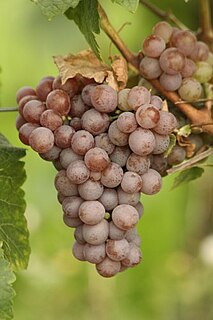 W
WMusqué is a French term applied to certain varieties or clones of grapes used for making wine. The term means both perfumed ("musky") and Muscat-like, and indicates that the variety or clone is highly aromatic. The term musqué is usually suffixed to the name of certain grape varieties to indicate a clone with musqué properties, e.g. "Chardonnay musqué" or "Sauvignon blanc musqué". Such clones have arisen through mutation of a regular ("non-musqué") clone of the variety, and such mutations have been recorded for several different grape varieties.
 W
WNew World wines are those wines produced outside the traditional winegrowing areas of Europe and the Middle East, in particular from Argentina, Australia, Canada, Chile, Mexico, New Zealand, South Africa and the United States. The phrase connotes a distinction between these "New World" wines and those wines produced in "Old World" countries with a long-established history of wine production – most notably, France, Italy, Germany, Spain and Portugal.
 W
WOenophilia is a love of wine. In the strictest sense, oenophilia describes a disciplined devotion to wine, accompanying strict traditions of consumption and appreciation. In a general sense however, oenophilia simply refers to the enjoyment of wine, often by laymen. Oenophiles are also known as wine aficionados or connoisseurs. They are people who appreciate or collect wine, particularly grape wines from certain regions, varietal types, or methods of manufacture. While most oenophiles are hobbyists, some may also be professionals like vintners, sommeliers, wine merchants, or one who tastes and grades wines for a living.
 W
WOld vine, a common description on wine labels, indicates that a wine is the product of grape vines that are notably old. There is a general belief that older vines, when properly handled, will give a better wine. There is no legal or generally agreed definition for old.
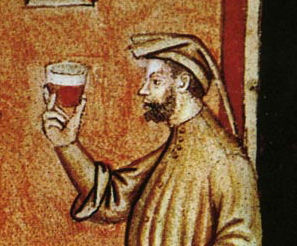 W
WOld World wine refers primarily to wine made in Europe but can also include other regions of the Mediterranean basin with long histories of winemaking such as North Africa and the Near East. The phrase is often used in contrast to "New World wine" which refers primarily to wines from New World wine regions such as the United States, Australia, South America and South Africa. The term "Old World wine" does not refer to a homogeneous style with "Old World wine regions" like Austria, France, Italy, Portugal, and Spain each making vastly different styles of wine even within their own borders. Rather, the term is used to describe general differences in viticulture and winemaking philosophies between the Old World regions where tradition and the role of terroir lead versus the New World where science and the role of the winemaker are more often emphasized. In recent times, the globalization of wine and advent of flying winemakers have lessened the distinction between the two terms with winemakers in one region being able to produce wines that can display the traits of the other region—i.e. an "Old World style" wine being produced in a New World wine region like California or Chile and vice versa.
 W
WThe Paharnic was a historical Romanian rank, one of the non-hereditary positions ascribed to the boyar aristocracy in Moldavia and Wallachia. It was the local equivalent of a Cup-bearer or Cześnik, originally centered on pouring and obtaining wine for the court of Moldavian and Wallachian Princes. With time, it became a major administrative office and, in Wallachia, also had a lesser military function. The retinue of such boyars, usually called Păhărnicei, was in both countries also a private army.
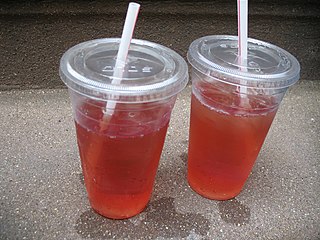 W
WPlonk is a non-specific and derogatory term used primarily in British and Australian English for cheap, low-quality wine. It is believed to come from Australian slang, in reference to blanc, before it became naturalised in Britain. Despite the reference to the colour white, the term is not limited to white wine, and can as easily indicate a red wine or rosé. In this context, the phrase has even spawned the title of a novel which evokes the perceived tackiness of the 1980s.
 W
WProvenance is the chronology of the ownership, custody or location of a historical object. The term was originally mostly used in relation to works of art but is now used in similar senses in a wide range of fields, including archaeology, paleontology, archives, manuscripts, printed books, the circular economy, and science and computing.
 W
WIn viticulture, there are several levels of regional climates that are used to describe the terroir or immutable characteristics of an area. These levels can be as broad as a macroclimate which includes entire wine regions or as small as a microclimate which includes the unique environment around an individual grapevine. In the middle is the mesoclimate which usually describes the characteristics of a particular vineyard site.
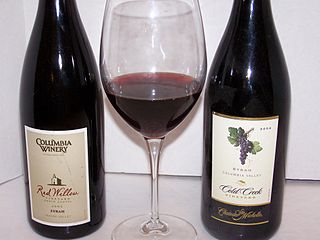 W
WThe Rhone Rangers are a group of American winemakers who promote the use of grape varieties from the Rhône Valley. They are mostly based on the West Coast, particularly California, and have created a not-for-profit organization for the promotion of wines containing at least 75% of the 22 Rhône grape varieties. The name is a pun on The Lone Ranger, and was coined by Wine Spectator to describe Randall Grahm for their 1989 April 15 issue, which featured Grahm dressed as the Lone Ranger under the title "The Rhône Ranger" (singular). The name was subsequently used for other winemakers.
 W
WIn viticulture, ripeness is the completion of the ripening process of wine grapes on the vine which signals the beginning of harvest. What exactly constitutes ripeness will vary depending on what style of wine is being produced and what the winemaker and viticulturist personally believe constitutes ripeness. Once the grapes are harvested, the physical and chemical components of the grape which will influence a wine's quality are essentially set so determining the optimal moment of ripeness for harvest may be considered the most crucial decision in winemaking.
 W
WSack is an antiquated wine term referring to white fortified wine imported from mainland Spain or the Canary Islands. There was sack of different origins such as:Canary sack from the Canary Islands, Malaga sack from Málaga, Palm sack from Palma de Mallorca, and Sherris sack from Jerez de la Frontera
 W
WSecond wine or second label is a term commonly associated with Bordeaux wine to refer to a second label wine made from cuvee not selected for use in the Grand vin or first label. In some cases a third wine or even fourth wine is also produced. Depending on the house winemaking style, individual plots of a vineyard may be selected, often those of the youngest vines, and fermented separately, with the best performing barrels being chosen for the house's top wine and the other barrels being bottled under a separate label and sold for a lower price than the Grand vin.
 W
WSediment is the solid material that settles to the bottom of any wine container, such as a bottle, vat, tank, cask, or barrel. Sediment is a highly heterogeneous mixture which at the start of wine-making consists of primarily dead yeast cells (lees) the insoluble fragments of grape pulp and skin, and the seeds that settle out of new wine. At subsequent stages, it consists of Tartrates, and from red wines Phenolic polymers as well as any insoluble material added to assist clarification.
 W
WA sommelier, or wine steward, is a trained and knowledgeable wine professional, normally working in fine restaurants, who specializes in all aspects of wine service as well as wine and food pairing. The role in fine dining today is much more specialized and informed than that of a wine waiter. Sommeliers Australia states that the role is strategically on par with that of the chef de cuisine.
 W
WSparkling wine is a wine with significant levels of carbon dioxide in it, making it fizzy. While the phrase commonly refers to champagne, EU countries legally reserve that term for products exclusively produced in the Champagne region of France. Sparkling wine is usually either white or rosé, but there are examples of red sparkling wines such as the Italian Brachetto, Bonarda and Lambrusco, and the Australian sparkling Shiraz. The sweetness of sparkling wine can range from very dry brut styles to sweeter doux varieties.
 W
WA Strausse or Strausswirtschaft is a type of wine tavern in winegrowing areas of German-speaking countries that is only open during certain times of the year. Typically it is a pub run by winegrowers and winemakers themselves, in which they sell their own wine directly to the public. The food served needs to be simple, regional cold dishes. Other expressions like Besenwirtschaft and Besenschänke, Rädlewirtschaft as well as Hecken- or Häckerwirtschaft are also common.
 W
WStraw wine, or raisin wine, is a wine made from grapes that have been dried to concentrate their juice. The result is similar to that of the ice wine process, but is a much older process and suitable for warm climates. The technique dates back to pre-Classical times with wines becoming fashionable in Roman times and in late Medieval/Renaissance Europe when wines such as Malmsey and Candia were highly sought after. Traditionally, most production of these wines has been in Greece, the islands off Sicily, Cyprus, Northern Italy and the French Alps. However producers in other areas are now using with the method too.
 W
WA stuck fermentation occurs in brewing beer or winemaking when the yeast become dormant before the fermentation has completed. Unlike an "arrested fermentation" where the winemaker intentionally stops fermentation, a stuck fermentation is an unintentional and unwanted occurrence that can lead to the wine being spoiled by bacteria and oxidation. There are several potential causes of a stuck fermentation; the most common are excessively high temperatures killing off the yeast, or a must deficient in the nitrogen food source needed for the yeast to thrive. Once the fermentation is stuck, it is very difficult to restart due to a chemical compound released by dying yeast cells that inhibit the future growth of yeast cells in the batch. Winemakers often take several steps to limit the possibility of a stuck fermentation occurring, such as adding nitrogen to the must in the form of diammonium phosphate or using cultured yeast with a high temperature and alcohol tolerance. These steps will each have their own subtle or dramatic effect on the resulting flavors and quality of the wine.
 W
WTannins are a class of astringent, polyphenolic biomolecules that bind to and precipitate proteins and various other organic compounds including amino acids and alkaloids.
 W
WTeinturier grapes are grapes whose flesh and juice is red in colour due to anthocyanin pigments accumulating within the pulp of the grape berry itself. In most cases, anthocyanin pigments are confined to the outer skin tissue only, and the squeezed grape juice of most dark-skinned grape varieties is clear. The red color of red wine comes from anthocyanins extracted from the macerated (crushed) skins, over a period of days during the fermentation process.
 W
WTerroir is a French term used to describe the environmental factors that affect a crop's phenotype, including unique environment contexts, farming practices and a crop's specific growth habitat. Collectively, these contextual characteristics are said to have a character; terroir also refers to this character.
 W
WUllage is a winemaking term that has several meanings but most commonly refers to the headspace of air between wine and the top of the container holding the wine. It can also refer to the process of evaporation that creates the headspace itself or it can be used as a past tense verb to describe a wine barrel or bottle that has gone through the evaporation process. The headspace of air is a mixture mostly of alcohol and water vapors with carbon dioxide that is a by-product of the fermentation process. In containers that are not completely air-tight, oxygen can also seep into this space. While some oxygen is beneficial to the aging process of wine, excessive amounts can lead to oxidation and other various wine faults. This is why wine in the barrels is regularly "topped up" and refilled to the top with wine in order to minimize the head space. In the bottle, the ullage or "fill level" of the wine can be an important indicator of the kind of care and storage conditions that the wine was kept in. After-market resellers and wine auction houses will often inspect the ullage levels of older vintages to determine the potential quality and value of wine.
 W
WA varietal wine is a wine made primarily from a single named grape variety, and which typically displays the name of that variety on the wine label. Examples of grape varieties commonly used in varietal wines are Cabernet Sauvignon, Chardonnay and Merlot. Wines that display the name of two or more varieties on their label, such as a Chardonnay-Viognier, are blends and not varietal wines. The term is frequently misused in place of vine variety; the term variety refers to the vine or grape while varietal refers to the wine produced by a variety.
 W
WA vineyard is a plantation of grape-bearing vines, grown mainly for winemaking, but also raisins, table grapes and non-alcoholic grape juice. The science, practice and study of vineyard production is known as viticulture. Vineyards are often characterised by their terroir, a French term loosely translating as "a sense of place" that refers to the specific geographical and geological characteristics of grapevine plantations, which may be imparted to the wine itself.
 W
WA vineyard designated wine is a wine produced from the product of a single vineyard with that vineyard's name appearing on the wine label.
 W
WVintage, in winemaking, is the process of picking grapes and creating the finished product—wine. A vintage wine is one made from grapes that were all, or primarily, grown and harvested in a single specified year. In certain wines, it can denote quality, as in Port wine, where Port houses make and declare vintage Port in their best years. From this tradition, a common, though not strictly correct, usage applies the term to any wine that is perceived to be particularly old or of a particularly high quality.
 W
WViticulture or winegrowing is the cultivation and harvesting of grapes. It is a branch of the science of horticulture. While the native territory of Vitis vinifera, the common grape vine, ranges from Western Europe to the Persian shores of the Caspian Sea, the vine has demonstrated high levels of adaptability to new environments, hence viticulture can be found on every continent except Antarctica.
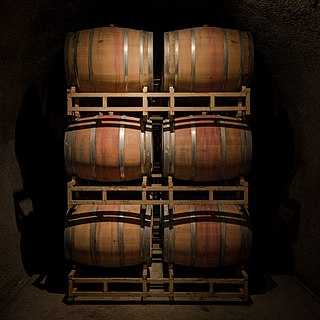 W
WWine caves are subterranean structures for the storage and the aging of wine. They are an integral component of the wine industry worldwide. The design and construction of wine caves represents a unique application of underground construction techniques.
 W
WWine fraud relates to the commercial aspects of wine. The most prevalent type of fraud is one where wines are adulterated, usually with the addition of cheaper products and sometimes with harmful chemicals and sweeteners.
 W
WA winemaking cooperative is an agricultural cooperative which is involved in winemaking, and which in similarity to other cooperatives is owned by its members. The members in a winemaking cooperative are usually vineyard owners, who deliver grapes to the cooperative, which is involved in production of wine from the grapes and the subsequent marketing activities.
 W
WIn viticulture, the yield is a measure of the amount of grapes or wine that is produced per unit surface of vineyard, and is therefore a type of crop yield. Two different types of yield measures are commonly used, mass of grapes per vineyard surface, or volume of wine per vineyard surface.